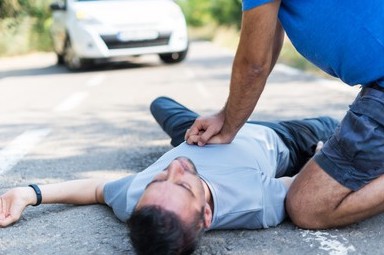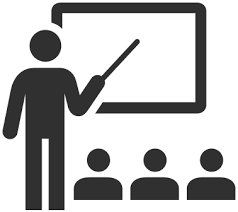
Level 'C' CPR
Someone has suddenly, without warning, suffered Sudden Cardiac Arrest. Their heart has stopped. Without fresh oxygen, the brain will die within minutes. Will you know what to do?
Ordinary citizens can potentially save life by applying the simple and easy to learn skills in the Level ‘C’ CPR training program. Participants learn to help an infant, child, or adult who has suddenly stopped breathing or has a foreign body airway obstruction.
Included in this life-saving course is how to use an AED (Automated External Defibrillator).
Registering for Blended Training Programs

Purchase Course

Complete Online Training

Call To Book In-Person Training
Enrolling in our Code Eight First Aid, CPR/AED and Control The Bleed programs is simple. Choose your on-line course and purchase with your credit or debit card or use PayPal.
Complete the on-line learning portion at your own speed in the comfort of your home or place of work. Once you have finished the program you can print your temporary certificate and phone us (800) 203-4709 to book your in-person practical training date.
Level ‘C’ CPR/AED covers recognition of heart attack, sudden cardiac arrest and using the AED (Automated External Defibrillator) for infant, child and adult. Blended online training and practical in-person session.
Legal issues in providing emergency care and the Good Samaritan Act. Understanding the Emergency Medical System and calling 9-1-1. Helping emergency responders by clearing away obstacles and quickly accessing the victim.
Basic understanding of the circulatory system, narrowing arteries and high blood pressure. Angina and heart attack signs and symptoms. Actions needed in a heart attack situation including assisting the victim with their own medications.
Sudden Cardiac Arrest results from a disruption to the heart’s electrical system. Understanding that this can happen to anyone, at any age even with no previous heart conditions. Recognize the signs of cardiac arrest and understand that every second counts in providing rapid care.
Surveying the incident scene for hazards to protect the rescuer and others. Importance of biohazard precautions such as wearing nitrile gloves. Rapidly assessing responsiveness and if the victim is breathing effectively.
Checking responsiveness, providing chest compressions and opening the airway are all important first steps. Discussing whether a rescuer should breathe for the patient. Mechanics of CPR positions for adult, child and infant and delivering high quality chest compressions. Individual and Team CPR.
Defibrillators are small, lightweight, portable and battery operated devices that provides and electric shock to a fibrillating (quivering) heart. Using the AED is simple and straightforward. Prepare the chest, attach the electrodes and follow instructions.
Importance of strategically locating defibrillators for rapid access. Preparing the chest and positioning the electrodes. Safety concerns and delivering the shock.
Recognize the difference between mild and severe choking. Understand the treatment options for conscious, unconscious and pregnant choking victims.
Anyone witnessing or responding to a serious medical situation may develop a critical incident stress reaction that, if left untreated could become Post traumatic Stress Syndrome, which is a debilitating condition.
Manufacturer’s videos demonstrating Canada’s most popular AED units.